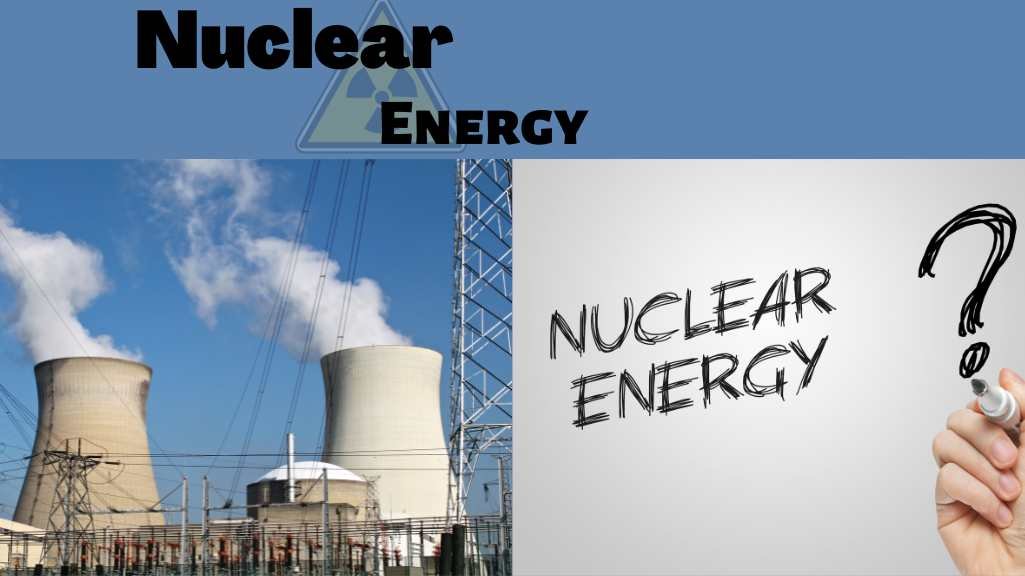Nuclear energy: Also Known as the Energy Released from the Nucleus of an Atom
Steffan Addison
. 3 min read
The nucleus, which is the center of an atom and is composed of protons and neutrons, is the source of nuclear energy, which is a form of energy that can be released from the nucleus. This type of energy can be generated in one of two ways: either through the process of fission, which occurs when the nuclei of atoms split into several parts, or through the process of fusion, which occurs when nuclei fuse together.

The Technology that Generate Electricity From Nuclear Fusion
The technology to generate electricity from nuclear fusion is still in the research and development phase, but nuclear fission is the method that is currently being used to harness nuclear energy all over the world to produce electricity. The core of every atom contains a store of energy known as nuclear energy. In this context, an atom is a very small particle that makes up every piece of matter in the universe. The majority of an atom's mass will typically be found in the nucleus, which is located at the center of the atom. The nucleus is made up of two different types of subatomic particles called neutrons and protons. The bonds that hold atoms together contain an exact and massive amount of energy in their interactions.
Aspects that are characteristic of nuclear energy
The use of nuclear power helps preserve the quality of the air:
Nuclear power is completely free of pollution because it produces no emissions. Fission, which is the process of splitting uranium atoms in order to produce energy, is the method that this device uses to generate power. Fission is used to create steam, which is then used to spin a turbine, which results in the generation of electricity without the emission of harmful byproducts, as is the case with fossil fuels.
Facilities the Creation of Jobs:
There are approximately 450,000 jobs in the United States that are supported by the nuclear industry, and the nuclear industry contributes an estimated $60 billion to the annual gross domestic product of the United States. Nuclear power plants in the United States may employ as many as 700 people at wages that are 30 percent higher than the national average.
Support National Security:
Both the United States' national security and its energy diplomacy depend on having a robust civilian nuclear sector. To continue to have an impact on how nuclear technologies are used for peaceful purposes, it is imperative that the United States preserve its position as the world's preeminent leader in this field.
Problems Associated with Nuclear Power
A Considerable Interval of Lag Time Between Planning and Operation:
The amount of time it takes to go from planning to operating a nuclear reactor takes into account the amount of time it takes to locate a site, obtain a site permit, purchase or lease the land, obtain a construction permit, obtain financing and insurance for construction, install transmission, negotiate a power purchase agreement, obtain permits, build the plant, connect it to transmission, and obtain a final operating license. All of these steps take place over the course of several years.
Danger posed by the spread of weapons:
The ability to import uranium for use in nuclear energy facilities is one of the benefits that comes with the construction of nuclear reactors for energy in countries that do not currently possess any such facilities. It is possible for the nation to covertly enrich the uranium in order to produce uranium suitable for use in weapons, as well as extract plutonium from uranium fuel rods so that it can be used in nuclear weapons.
What is the mechanism behind nuclear power?
Uranium, more specifically 235U, is used in nuclear power plants to generate electricity. Nuclear fission can only occur in this particular isotope of uranium. The far more common isotope 238U accounts for approximately 99% of all naturally occurring uranium. However, in contrast to 235U, it is not capable of undergoing nuclear fission, and as a result, it cannot be used as a source of fuel. A domino effect is created as a result of this process because it keeps repeating itself. This heat is captured by the power plant and used to boil water into steam. The steam is then put to use to turn a turbine, which results in the production of electricity.
Facts Concerning NUV and Nuclear Energy
An energy source that has a low carbon footprint:
One of the energy sources that contributes the least to the production of greenhouse gases is nuclear power. Because it has a very low CO2 emission rate compared to other forms of energy, such as solar, for example, it is an essential energy source for the transition to a low-carbon economy.
Energy that is both consistent and under your control:
Nuclear power, in addition to being an energy that is good for the environment, also offers continuous electricity thanks to its reliable production system, which is able to adjust to different levels of demand for electricity.
Competitive energy:
Because nuclear power is one of the least expensive ways to generate electrical power, France is able to maintain one of the most competitively priced electricity markets in all of Europe.
More Stories from
Chemical Engineering: Shaping the World through Science and Innovation
It explores the role of chemical engineers in designing and optimizing processes, their contributions to energy and environmental sustainability, material science and engineering, pharmaceuticals, and the food and beverage industry.
Understanding AC and DC: The Fundamentals of Electric Power
This article provides a concise overview of Alternating Current (AC) and Direct Current (DC), the two fundamental types of electrical power.
The Mysteries of the Brain: Recent Discoveries in Neuroscience
From the brain's remarkable adaptability to the profound link between the gut and brain, explore the cutting-edge findings shaping our understanding of cognition and behavior.
Defense Advanced Research Projects Agency (DARPA): Pioneering Innovation in Defense Technology
This article provides a concise overview of the Defense Advanced Research Projects Agency (DARPA), its mission, and its key contributions to revolutionizing defense technology.





.png?width=40&aspect_ratio=1:1)

.png?width=40&aspect_ratio=1:1)




